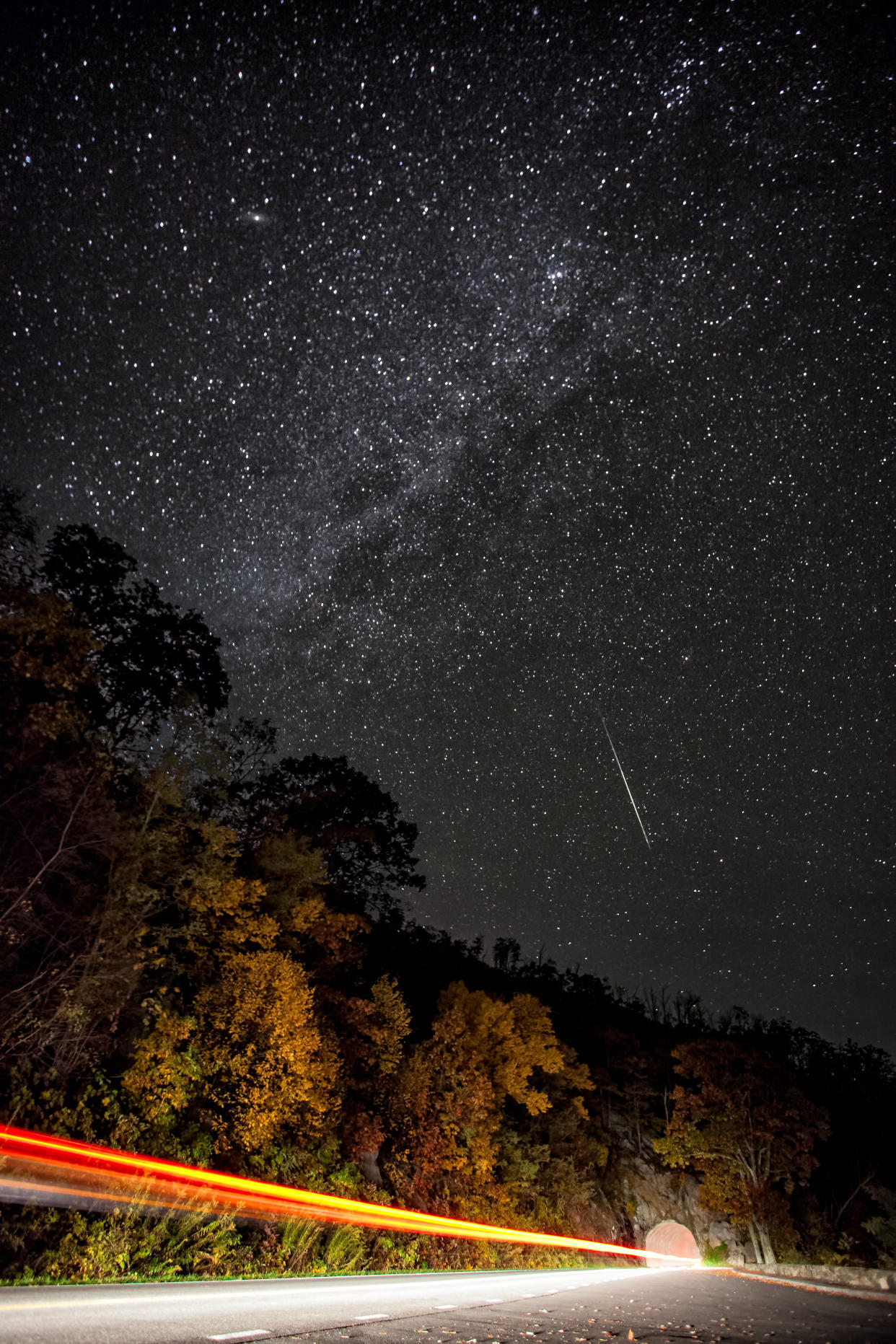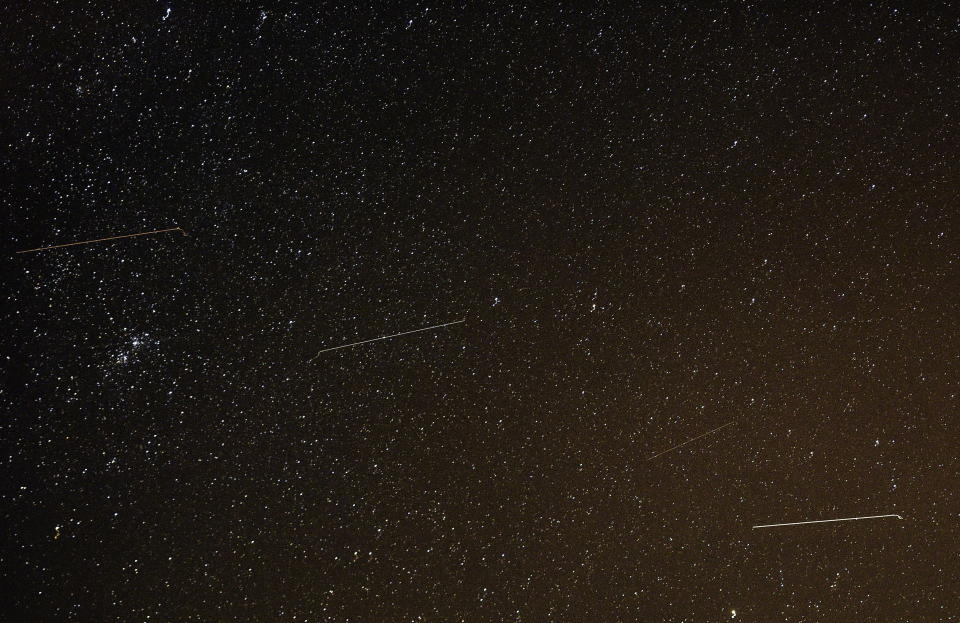The Orionid meteor shower will light up the skies this weekend with 20 shooting stars per hour

Stargazers should be in for a treat this week as the annual Orionid meteor shower peaks – with up to 20 shooting stars per hour.
The meteor shower – remnants of Halley’s Comet – happens every year in October.
Over the weekend, the meteoroids from Halley’s Comet will strike Earth’s atmosphere at a speed of 148,000mph, burning up in streaking flashes of light that can be seen with the naked eye.
Most popular on Yahoo News UK:
UK braced for ‘weather bomb’ as Storm Brian moves in
Vladimir Putin laughs uncontrollably at suggestion Russia should export pork to Muslim country
North Korea warns the US of an ‘unimaginable’ military strike amid rising tensions
Archaeologist spots hundreds of mysterious, ancient stone ‘gates’ on Google Earth
Grieving widower catches male nurse having sex with dead wife in hospital morgue
Tom Kerss, an astronomer at the Royal Observatory Greenwich, said: ‘The Orionids is a modest shower, producing around 20 meteors per hour at best under absolutely perfect conditions.

‘In reality, you’ll see far fewer, because your local conditions are variously less than ideal, but Orionid meteors are known for their speed and brilliance, so if you persevere there’s a good chance you’ll see several bright ‘shooting stars’ zipping across the sky.’
The shower is active throughout October, but Kerss says the best time to see it will be on October 22 between midnight and dawn, when the sky is darkest and the shower will be at its brightest.
Mr Kerss said: ‘We expect the peak to occur on the night of 21/22 October when the young crescent Moon will set conveniently before the radiant of the shower – the point from which the meteors appear to spread out – rises in the east.
‘If you can brave the cold, make a plan to stay out between midnight and 3am on Sunday morning to give yourself the best chance, and enjoy the thrill of seeing tiny flecks of Halley’s Comet disintegrate at hypersonic speeds above your head.’
He advises finding a secluded spot and allowing the eyes to adjust to the darkness.

 Yahoo News
Yahoo News 

